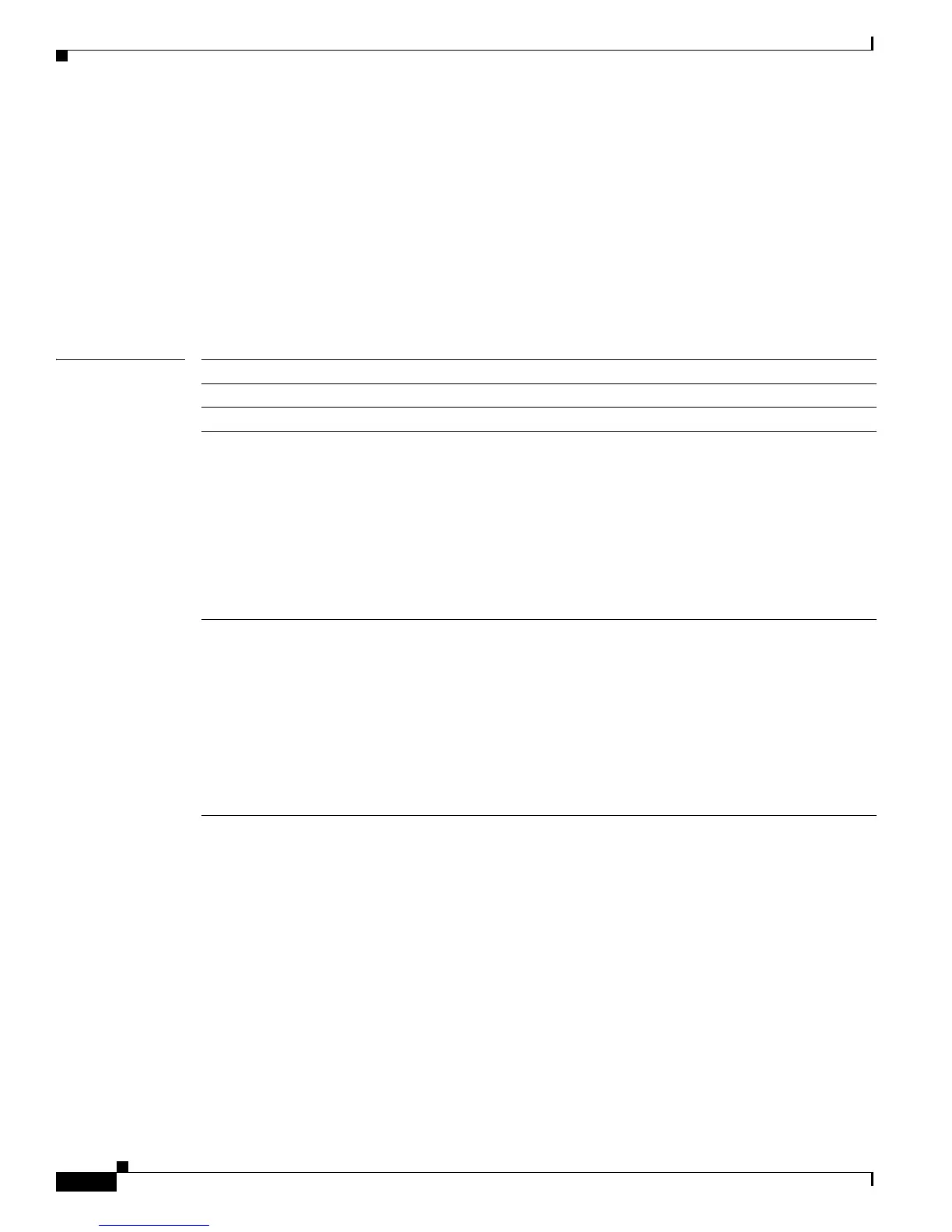2-554
Cisco IE 3000 Switch Command Reference
OL-13019-01
Chapter 2 IE 3000 Switch Cisco IOS Commands
storm-control
storm-control
Use the storm-control interface configuration command to enable broadcast, multicast, or unicast storm
control and to set threshold levels on an interface. Use the no form of this command to return to the
default setting.
storm-control {{broadcast | multicast | unicast} level {level [level-low] | bps bps [bps-low] | pps
pps [pps-low]}} | {action {shutdown | trap}}
no storm-control {{broadcast | multicast | unicast} level} | {action {shutdown | trap}}
Syntax Description broadcast Enable broadcast storm control on the interface.
multicast Enable multicast storm control on the interface.
unicast Enable unicast storm control on the interface.
level level
[level-low]
Specify the rising and falling suppression levels as a percentage of total bandwidth
of the port.
• level—Rising suppression level, up to two decimal places. The range is 0.00 to
100.00. Block the flooding of storm packets when the value specified for level
is reached.
• level-low—(Optional) Falling suppression level, up to two decimal places. The
range is 0.00 to 100.00. This value must be less than or equal to the rising
suppression value. If you do not configure a falling suppression level, it is set to
the rising suppression level.
level bps bps
[bps-low]
Specify the rising and falling suppression levels as a rate in bits per second at which
traffic is received on the port.
• bps—Rising suppression level, up to 1 decimal place. The range is 0.0 to
10000000000.0. Block the flooding of storm packets when the value specified
for bps is reached.
• bps-low—(Optional) Falling suppression level, up to 1 decimal place. The range
is 0.0 to 10000000000.0. This value must be equal to or less than the rising
suppression value.
You can use metric suffixes such as k, m, and g for large number thresholds.

